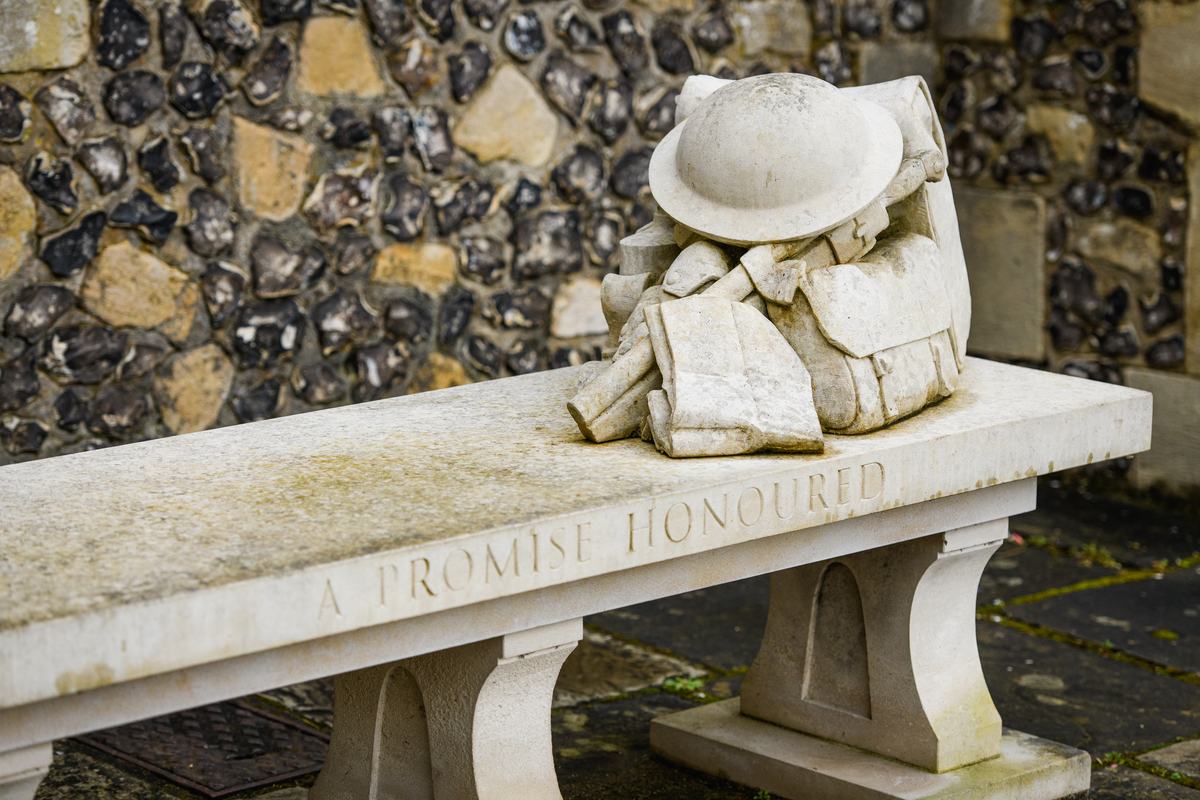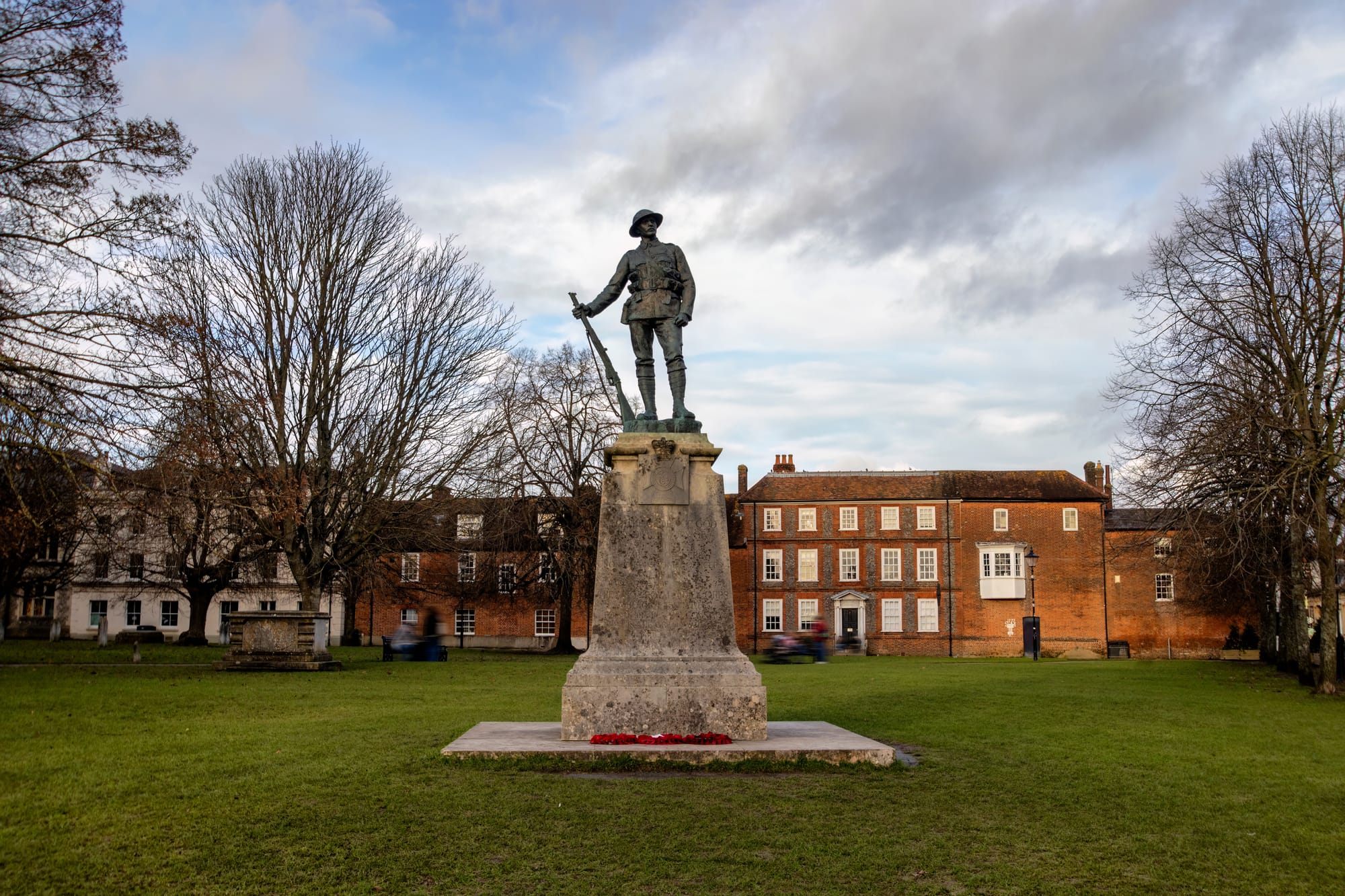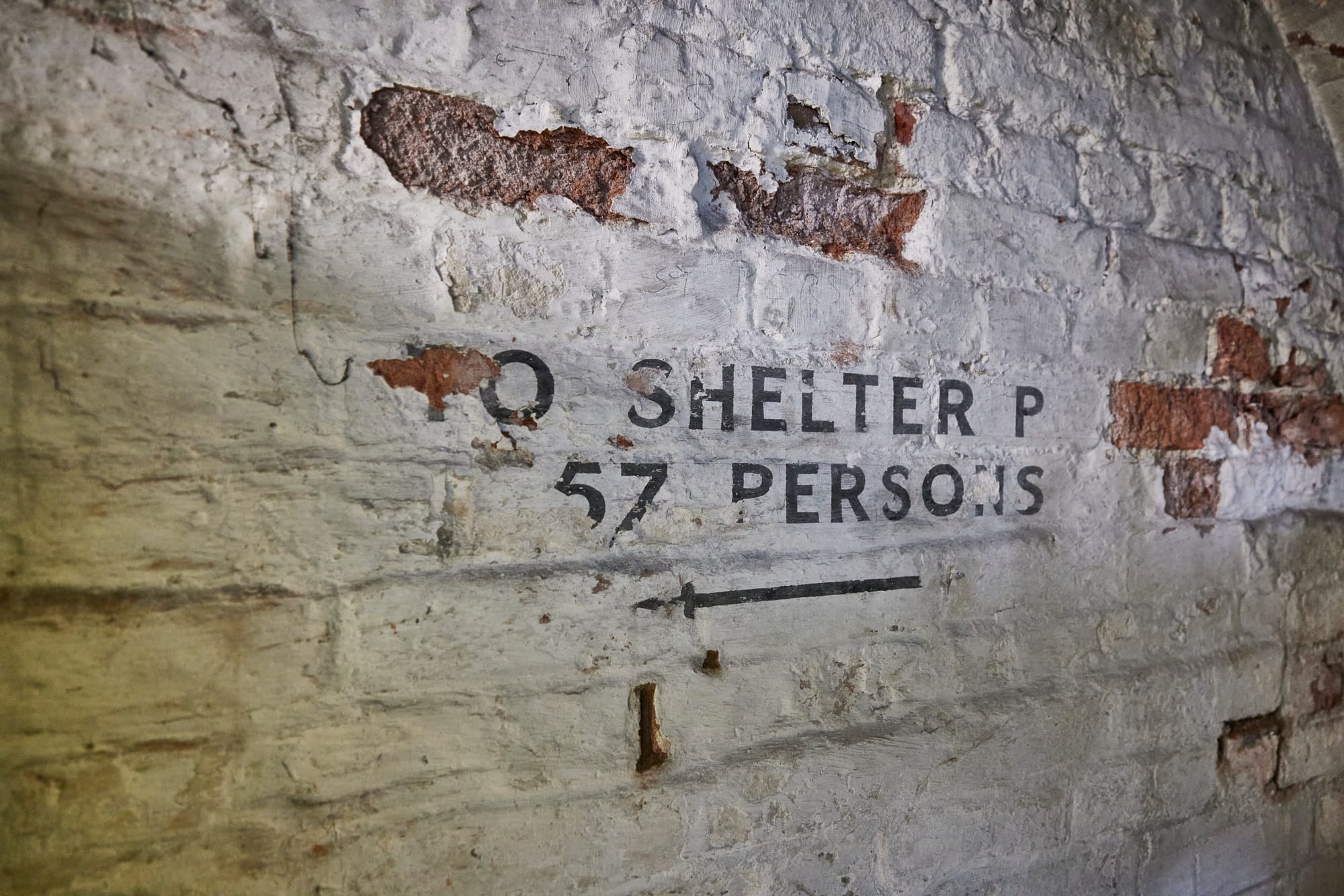As we commemorate the 80th anniversary of D-Day this week across the nation and beyond, we're reflecting on the military history of Winchester.
Many recall Winchester as a city of war, battle and clashing factions, but fortunately for the ancient capital, it largely avoided significant damage during the World Wars of the 20th century. Discover more below.
World War I
During World War I, Winchester was a major army depot and one of the largest military transit camps in the UK, as reported by the BBC; war broke out in the summer of 1914 and by December, the 27th Division of the British Expeditionary Force - around 30,000 men - was stationed at Morn Hill, just east of Winchester.
Soldiers arrived at the camps of Morn Hill and Winnall Down in the hills around the city of Winchester, and once a division was fully assembled, from 19 December of that year they travelled to Southampton Docks, just 15 miles away, and on to the front lines in France and Belgium. Many of them would unfortunately never see England again.
In 1917, the camps were transferred to the US Army for the transit of their soldiers, with nearly one million passing through. After their departure, the camps of Morn Hill and Winnall Down took on a new role as hospitals for casualties returning from the front. In 1918, a branch line was built from Winnall on the Didcot, Newbury and Southampton railway to the camps in the area; its route can still be seen today as farm tracks. By the end of the war, over 250,000 troops were accommodated in the main camps in Winchester.

In 1919, the Mayor of Winchester made a promise to commemorate the soldiers who had been billeted in the hills around the city, and in 2014 the promise was finally fulfilled. This bench - made of Portland stone - sits just outside The Great Hall and symbolises the soldiers' presence, designed to depict a soldier's kit left on a railway bench.
World War II
In 1939, at the outbreak of World War II, there was such a huge influx of recruits coming forward to join the King's Royal Rifle Corps (KKRC) and the Rifle Brigade Prefixes, that it became necessary for KRRC recruits to be trained at Bushfield Camp, two miles outside Winchester. (Source: The Royal Green Jackets (Rifles) Museum Winchester).

Although the city may well have expected German impact as a central location in the country, it may be surprising to learn that the only bombs to directly hit Winchester fell on 9 February 1943. What is now the Theatre Royal on Jewry Street was struck by the first bomb from a German plane: it grazed the roof of the building and skidded to a halt at the junction with City Road, without exploding and causing little damage.
Unfortunately, the second bomb dropped near a bus stop on Hyde Street, outside what was at the time a brewery, killing seven people who were waiting for a bus. Five other bombs fell in nearby gardens, fortunately with no fatalities and little damage, leaving residents largely unscathed, though shaken.
The undercroft of the iconic Great Hall was prepared as a bunker during the war - whispers of which can still be witnessed today.

D-Day
In the period leading up to D-Day, Hampshire was transformed into an enormous military base, with hundreds of thousands of Allied soldiers stationed in its towns, villages, forests and woodlands. Tanks were transported by rail to Alresford Station, just east of Winchester, before being moved to various local camps. By 1943, the 47th Infantry Regiment, part of the 9th Division of the US Army, had established its headquarters on Broad Street in Alresford.

In April of 1944, the Matterley Bowl on the outskirts of Winchester hosted a major US Army boxing tournament. The space was filled with American and British troops, who all sat to witness Joe Louis, the heavyweight champion of the world. The natural amphitheatre was also used by General Eisenhower to address American troops before D-Day.
The Commonwealth War Graves Commission records a total of 228 war victims buried in Winchester cemeteries at Magdalen Hill, West Hill, St Giles Hill and St James Hill Roman Catholic cemetery — 158 casualties from WWI and 70 from WWII.

With special thanks to Clare Dixon, Don Bryan, Geraldine Buchanan and James King for their book, Bloody British History: Winchester, which has been used as source material for this article.



